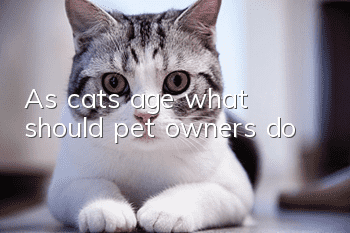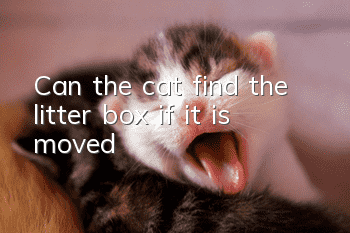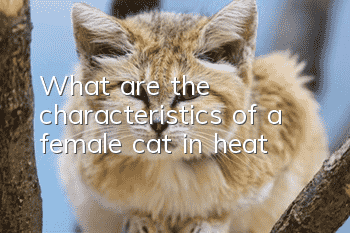As cats age, what should pet owners do?

After cats are over 10 years old, we call them senior cats. When cats age, whether it is daily diet or home care, owners should pay great attention to it, because at this stage, the cat’s body Functional status and eating habits will change greatly. If we ignore aging cats, the consequences for the cat will be serious.
Clinical studies have found that the organ functions of the body will begin to undergo great changes, and many diseases that are prone to aging cats will also occur one after another at this stage.
1. Decreased bone function
Cats entering the aging stage often like to lie down, are unwilling to move around, do not like to play games, and do not like to jump up and down anymore. This is a phenomenon of bone function and muscle decline. At this time, cat owners can use cat teasing sticks to attract cats to exercise. Generally, the exercise lasts for about 5-10 minutes, but it should not be too strenuous.
2. Hearing loss
Cats respond slowly to their owners’ calls, or even don’t respond at all. Cat owners should regularly clean their cats’ ear canals with ear cleaning solution to avoid the growth and reproduction of earwax and bacteria in the cat’s ear canals, and to reduce the occurrence of deafness in cats caused by germs. The probability.
3. Decreased vision
Cataracts and iris atrophy are eye diseases that cause cats to have long hair. In daily life, it is best for cat owners to use moist paper towels to remove excess eye secretions from their cats.
4. Changes in diet structure
People who raise cats will find that the diet structure of cats changes at different stages of development. You cannot only pay attention to diet in the kitten period, but the diet in the old age is more important. Aging cats need more high-quality protein, fat, and carbohydrates. In addition, if possible, it is best to supplement your cat with some fish oil, taurine, probiotics and vitamins.
- How do you know if your cat has been vaccinated?
- Why does cat moss spread the more it is applied?
- What to do if a Balinese cat is dehydrated
- What to do if your Maine Coon cat has diarrhea?
- Is platycodon poisonous to cats?
- Why can’t cats and dogs eat mixed food?
- Can cats eat cucumbers?
- How to train Siamese cats? Daily training methods for Siamese cats!
- Maine Coon cat personality traits
- Why does a cat sneeze without a runny nose?



